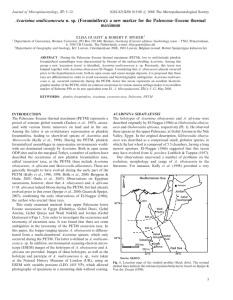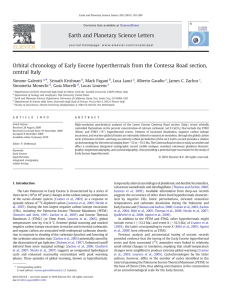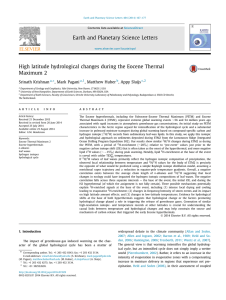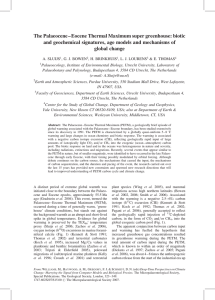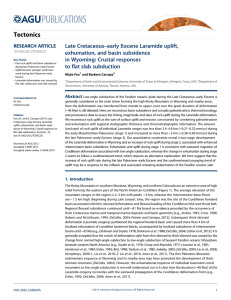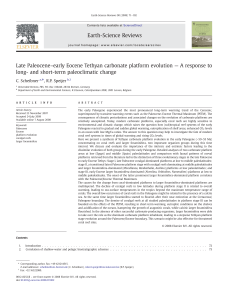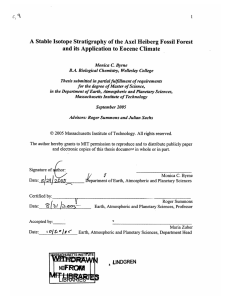Slide 1
advertisement
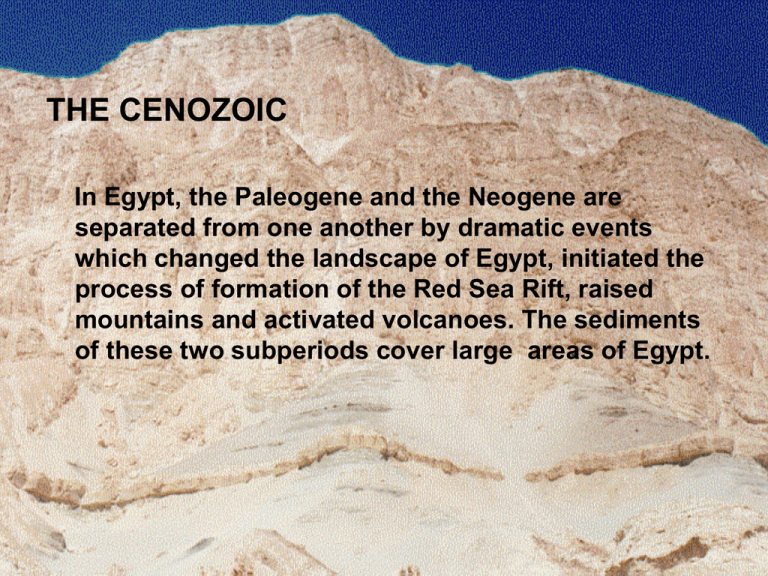
THE CENOZOIC In Egypt, the Paleogene and the Neogene are separated from one another by dramatic events which changed the landscape of Egypt, initiated the process of formation of the Red Sea Rift, raised mountains and activated volcanoes. The sediments of these two subperiods cover large areas of Egypt. The Paleocene and Eocene Paleocene and Eocene outcrops are usually associated with each other covering more than 21% of the surface area of Egypt. They are well exposed in the Nile Valley and bordering areas in the Western and Eastern Deserts, forming plateaus and building mountain scarps on both sides of the Gulf of Suez, central and northern Sinai. They are mostly represented by open marine sediments of carbonates, marls and shales. A typical Paleocene section of the Stable Shelf is that of Gabal Awaina, a 450 m high outlier lying about 8.5 km to the northeast of the Sebaiya railway station. This hill is the type locality of the Esna Shale rock unit. The Gabal Awaina section is made up primarily of shales interrupted by a middle carbonate bed named Tarawan Chalk. No overall classification of the Eocene rocks of Egypt is universally accepted. Most classifications start from Zittel's major divisions: the Libysche and Mokattamstufe to which SAID (1960) gave the formal names Libya and Mokattam Groups, respectively. The Libya Group was subdivided into the Esna, Thebes (= Zittel's Lower Libyan) and Minia (Zittel's Upper Libyan) Formations. The name Mokattam Formation was retained from Zittel's Lower Mokattam and the name Maadi Formation was coined to cover Zittel's Upper Mokattam. Subsequent workers accepted this framewark, elaborating and refining on it (e.g. BOUKHARY & ABDEL MALIK 1983, STROUGO 1986, etc.). SAID (1990) subdivided the Eocene deposits into the following major rock units, from top to bottom: - Maadi Group comprising from top to bottom the Wadi Hof, Wadi Garawi and Qurn Formations and their equivalents. - Mokattam Group divided into a lower Mokattam Subgroup comprising the Nummulites gizehensis bearing units of the Cairo area and their equivalents in other parts of Egypt, and an upper Observatory Subgroup for the carbonate sections of the Cairo area and their equivalents in other parts of Egypt. - Minia Formation - Thebes Group comprising the Thebes Formation of the Stable Shelf areas and its equivalents in other parts of Egypt. - Esna Formation (top part) and its equivalents. The Economic aspects of the Eocene deposits in Egypt include: - The production of Bahariya Iron Ore from the Naqb Formation. -The soft chalky limestones are quarried and mixed with clay in the manufacture of cement at Tura. They are also used in the steel industry at Helwan. - Limestones are quarried from the Mokattam plateau and are used as building stones. The Pharaonic tombs in the Valley of Kings and the Valley of Queens west of Luxor were excavated in the Lower Eocene Thebes Formation and the Pyramids of Giza were built from the Middle Eocene Nummulitic "gizehensis" limestones - Middle Eocene hard crystalline limestones are quarried as marbles and alabaster used for ornamental purposes, e.g. in Wadi Sannour.


